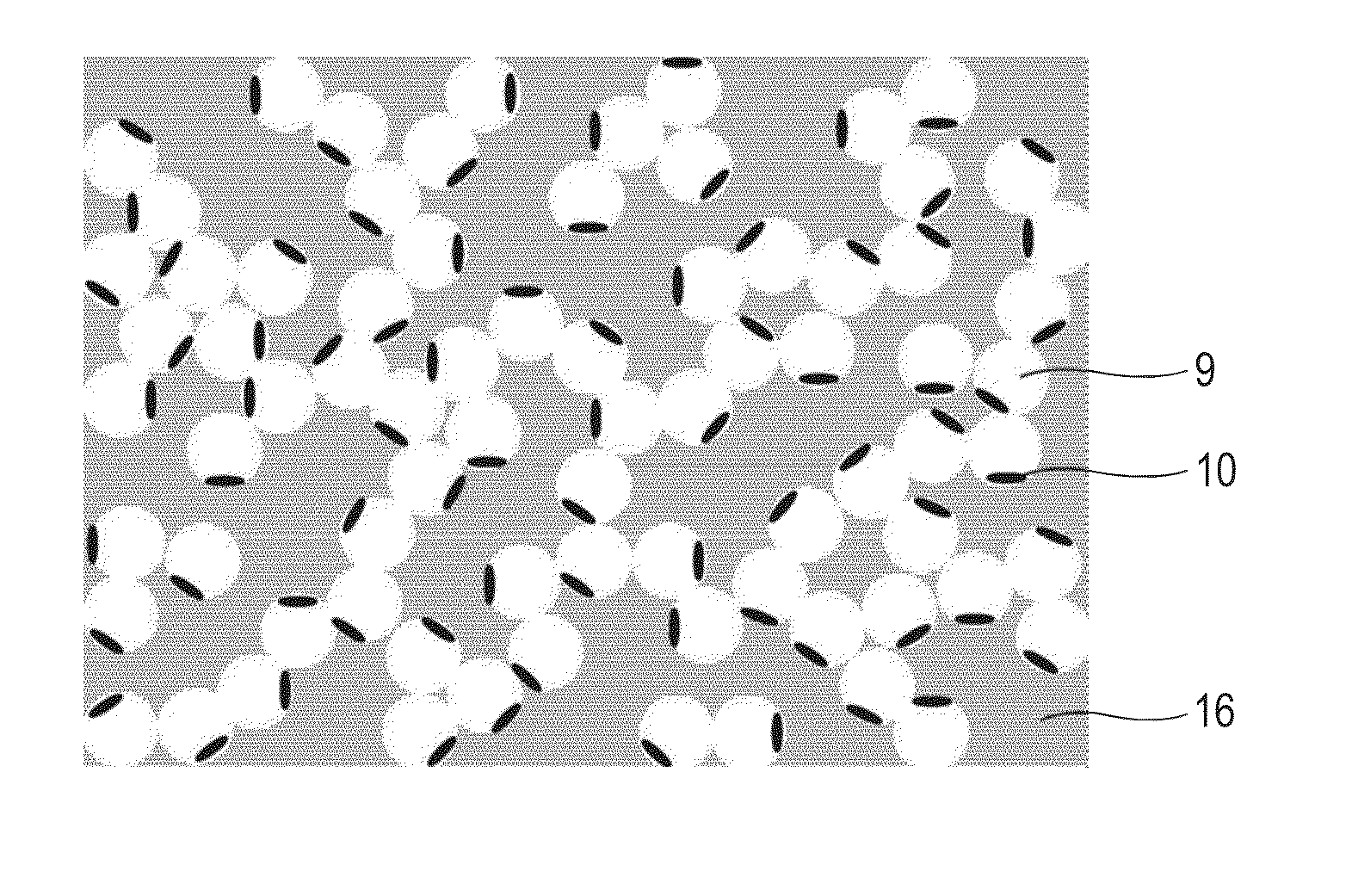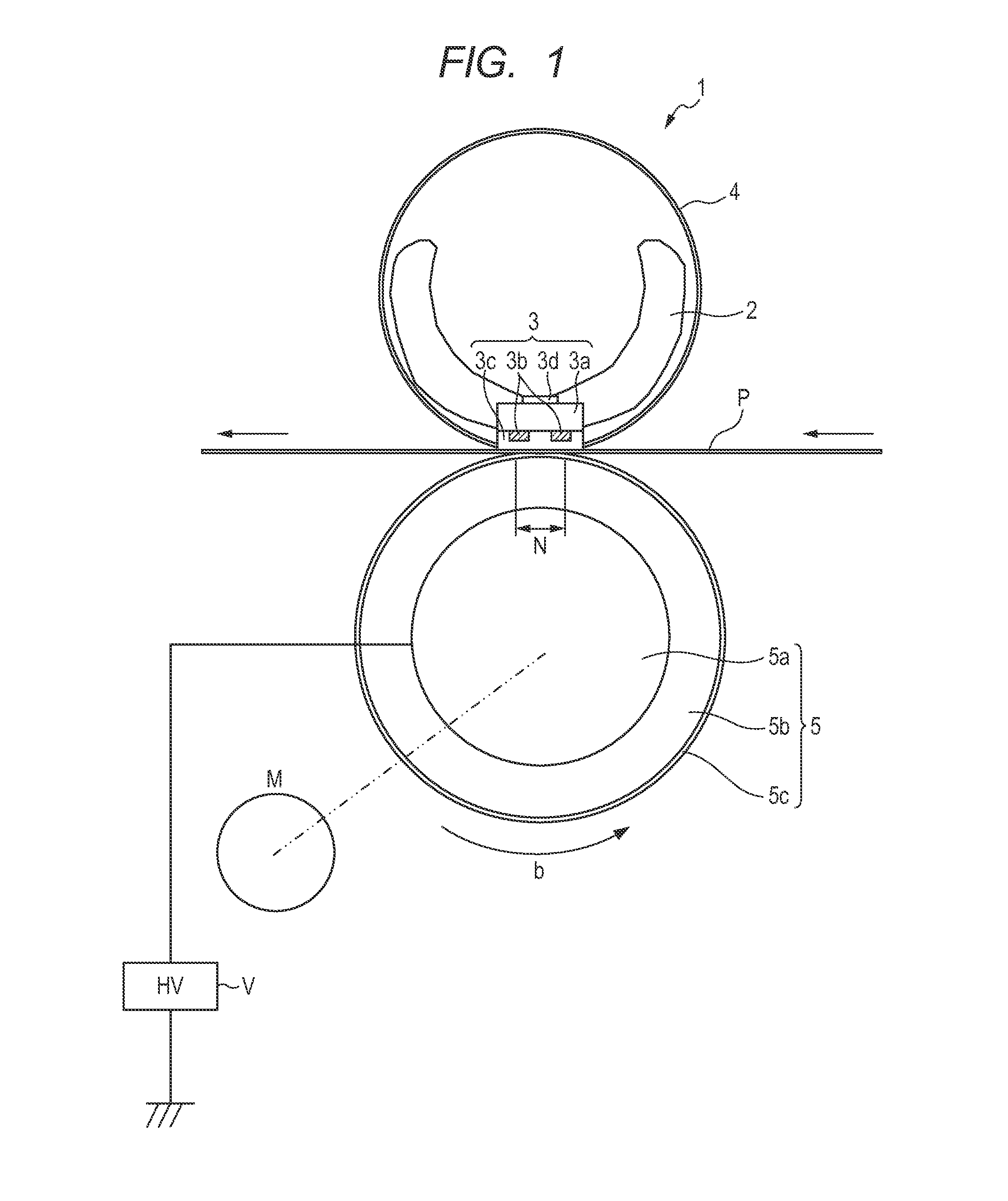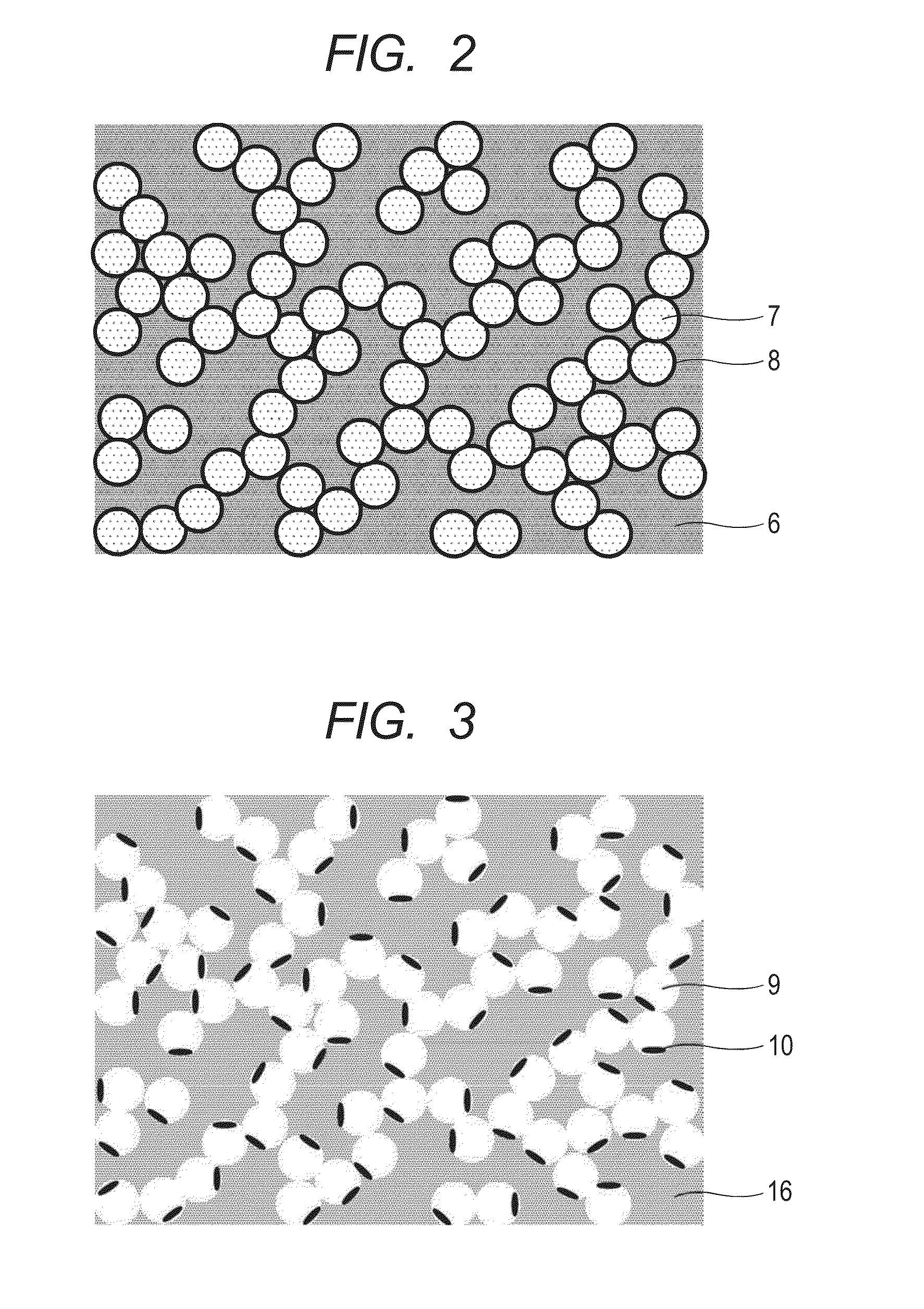Electrophotographic member and heat fixing assembly
- Summary
- Abstract
- Description
- Claims
- Application Information
AI Technical Summary
Benefits of technology
Problems solved by technology
Method used
Image
Examples
example 1
1. Manufacturing of Pressure Roller
[0092]Relative to 100 mass parts of a commercially available addition curing silicone rubber liquid concentrate (trade name: SE1740, made by Dow Corning Toray Co., Ltd.), 2 mass parts of expanded acrylonitrile-based copolymer resin microballoons (trade name: MATSUMOTO MICROSPHERE F-80DE, made by Matsumoto Yushi-Seiyaku Co., Ltd) as resin microballoons were blended. Furthermore, an ionic liquid, perfluorobutanesulfonate-1-ethyl-3-methylimidazolium (EMI-EF41) was blended as a combination of an ion conducting agent and an aggregating agent in an amount of 0.2 mol / Kg relative to the silicone rubber liquid concentrate. The mixture was sufficiently mixed and agitated to produce an elastic layer forming rubber composition.
[0093]The expanded acrylonitrile-based copolymer resin microballoons (trade name: MATSUMOTO MICROSPHERE F-80DE, made by Matsumoto Yushi-Seiyaku Co., Ltd) for use cause no foam breakage at the primary cross-linking temperature (about 100°...
examples 2 to 8
[0110]Pressure rollers Nos. 2 to 8 were obtained by the same procedure as in Example 1, except that the type of the ion conducting agent was changed as shown in Table 1. The pressure rollers were evaluated in the same way as in Example 1. The evaluation results are shown in Table 2. In Table 1, the cation species and anion species are shown in symbols. The names of substances represented by each of the symbols are shown in Table 3. Further, combinations of the anion species and the cation species in Table 1 mean the ionic liquids shown in Table 4.
examples 9 to 15
[0111]An elastic layer forming rubber composition was obtained in the same way as in Example 1, except that the type of the ion conducting agent was changed as shown in Table 1, and 5 mass parts of triethylene glycol (TEG) was blended as aggregating agent. Pressure rollers Nos. 9 to 15 were obtained by the same procedure as in Example 1 for the subsequent steps. The pressure rollers were evaluated in the same way as in Example 1. The evaluation results are shown in Table 2. The combinations of the anion species and the cation species in Table 1 mean the ionic liquids shown in Table 4.
PUM
 Login to View More
Login to View More Abstract
Description
Claims
Application Information
 Login to View More
Login to View More - Generate Ideas
- Intellectual Property
- Life Sciences
- Materials
- Tech Scout
- Unparalleled Data Quality
- Higher Quality Content
- 60% Fewer Hallucinations
Browse by: Latest US Patents, China's latest patents, Technical Efficacy Thesaurus, Application Domain, Technology Topic, Popular Technical Reports.
© 2025 PatSnap. All rights reserved.Legal|Privacy policy|Modern Slavery Act Transparency Statement|Sitemap|About US| Contact US: help@patsnap.com



